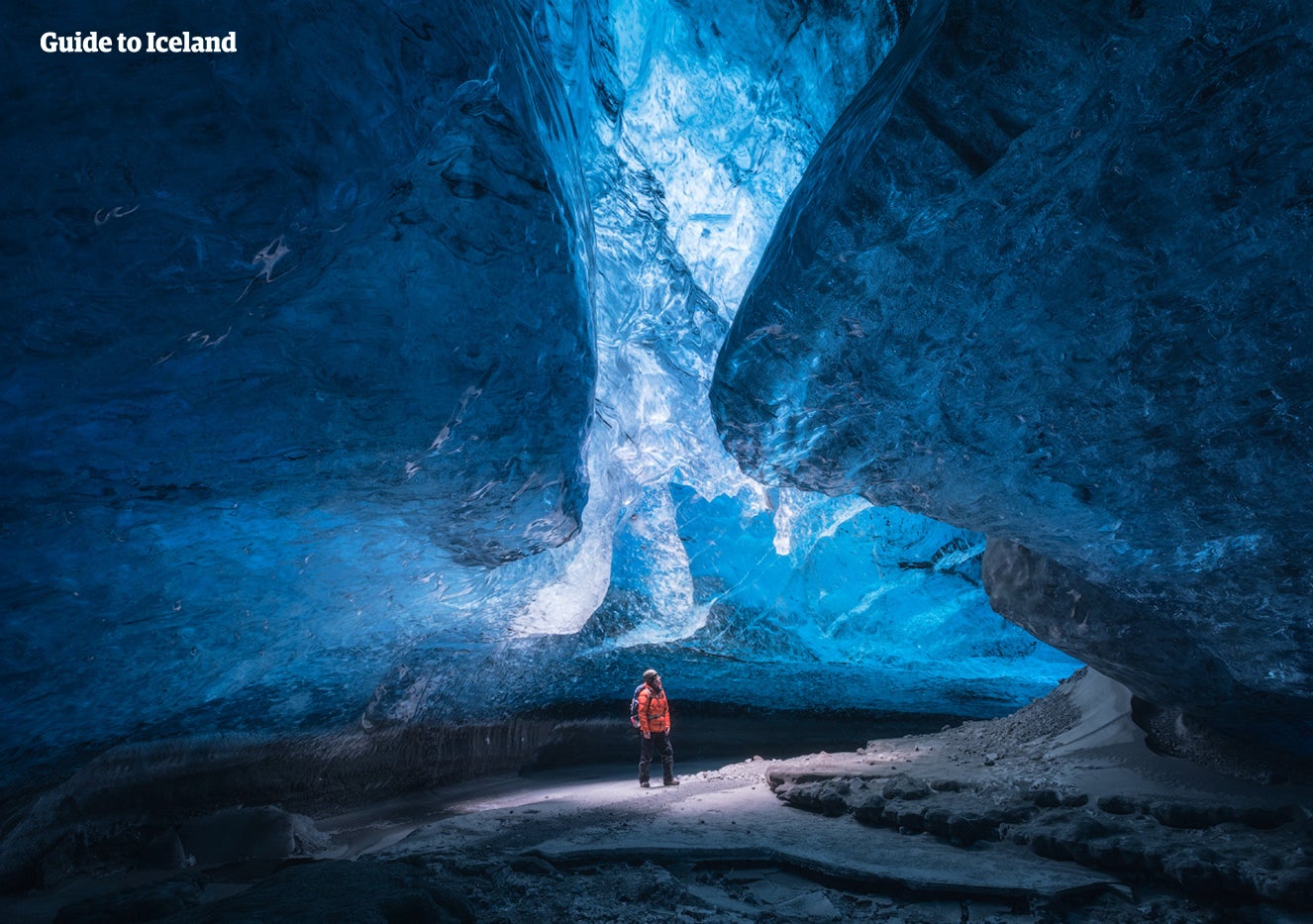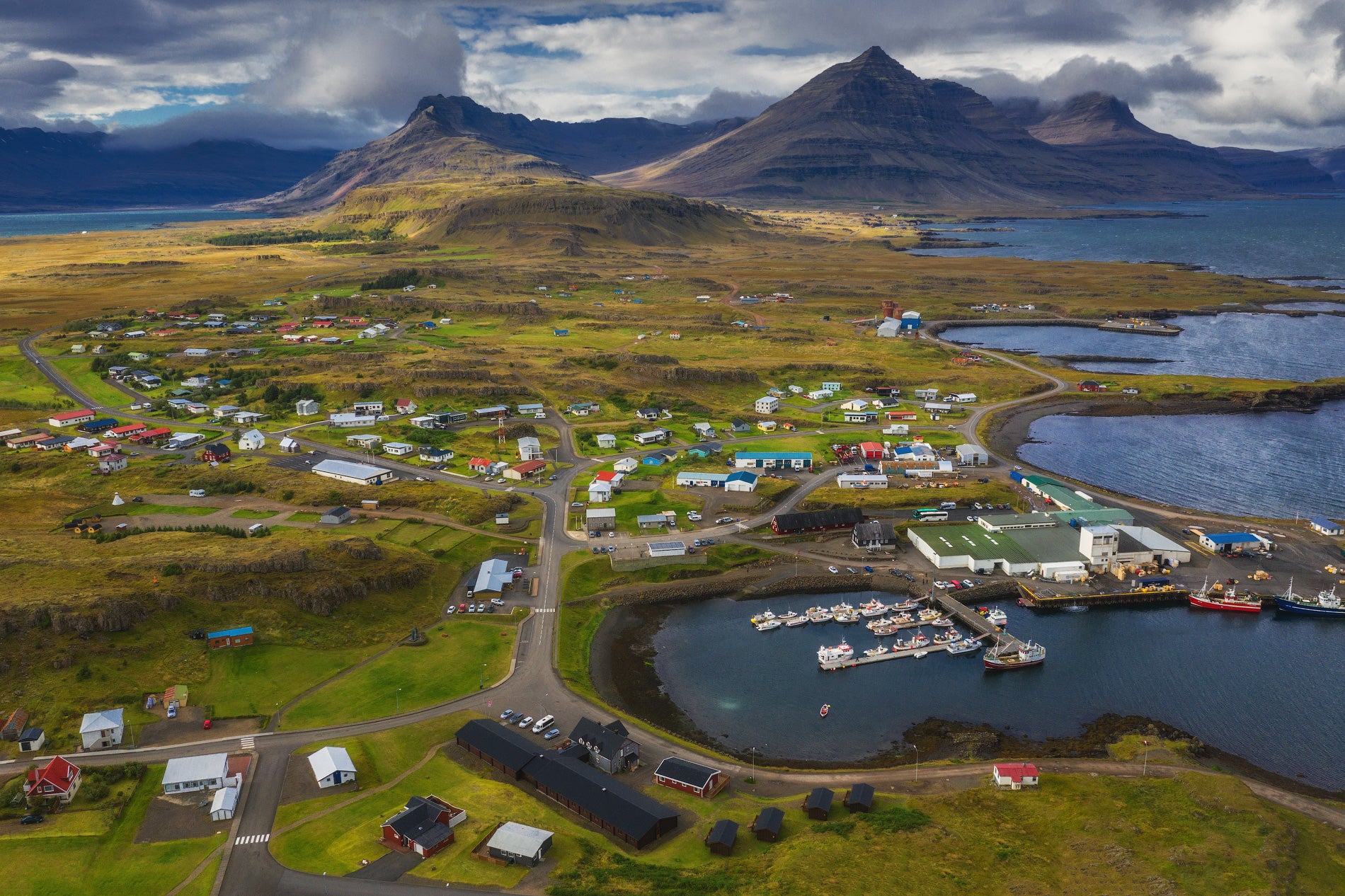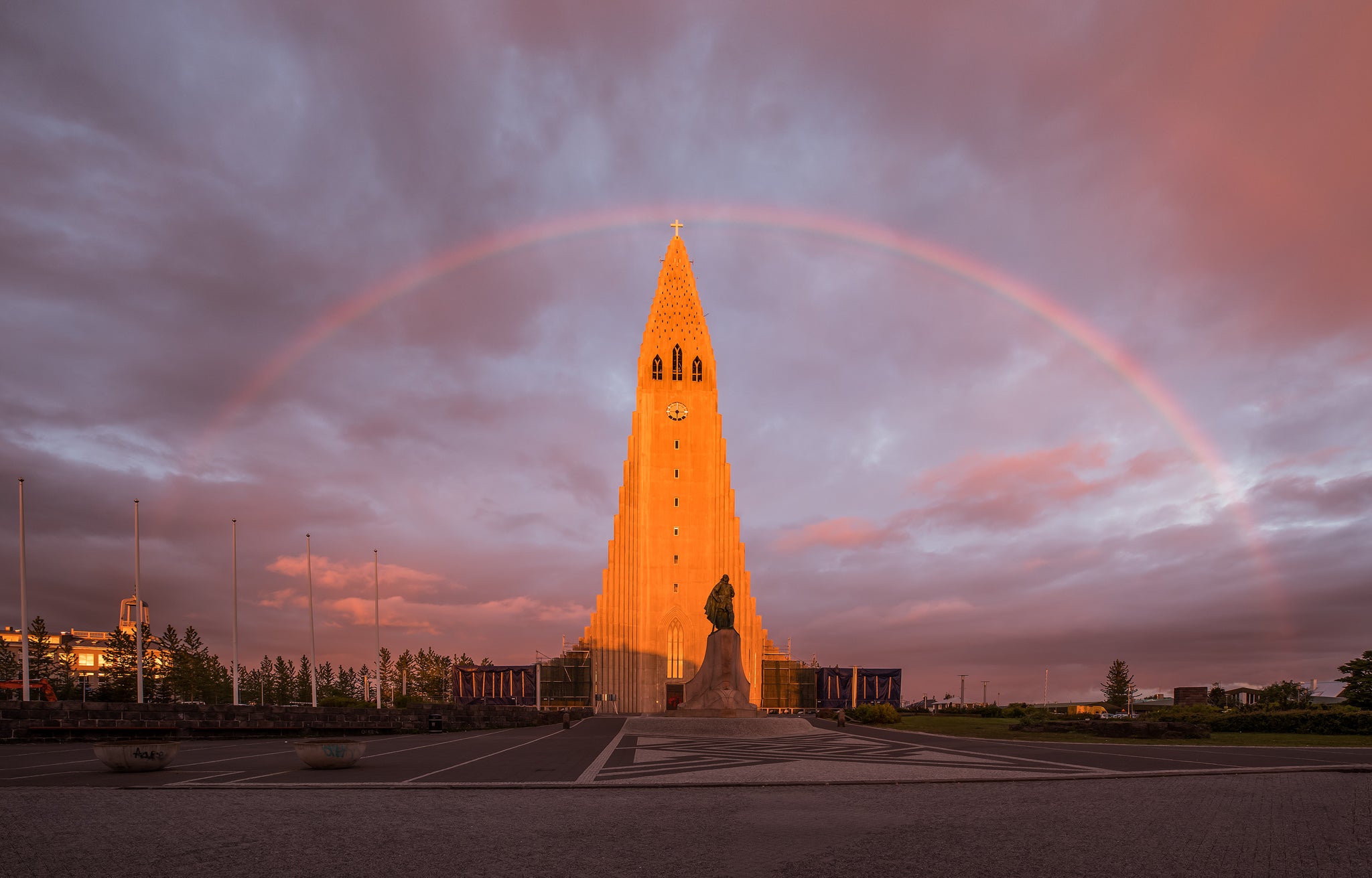Explore the magic of the aurora in this complete guide to one of nature’s most captivating spectacles. From their dazzling colors to their mesmerizing movement across the night sky, auroras are a breathtaking phenomenon that lights up polar skies and leaves viewers in awe.
Auroras are more than just beautiful lights. They’re a window into space weather and the Earth’s magnetic field. Find out everything you need to know about the northern lights and southern lights, from the science behind different types of auroras to why they vary and where they’re most visible.
Why You Can Trust Our Content
Guide to Iceland is the most trusted travel platform in Iceland, helping millions of visitors each year. All our content is written and reviewed by local experts who are deeply familiar with Iceland. You can count on us for accurate, up-to-date, and trustworthy travel advice.
Iceland has long been a favorite spot to see the aurora dancing in the sky. If you want to maximize your chances of witnessing the display right from your doorstep, consider booking a northern lights hotel in Iceland that's located in the countryside, with great visibility of the aurora.
If you're feeling adventurous, you can rent a car in Iceland to explore the best viewing spots on your own or join northern lights tours to increase your chances of witnessing this captivating spectacle.
Whether you’re hoping to catch the lights in the polar skies, explore the dynamics of aurora borealis vs. aurora australis, or understand the impacts of different types of auroras on human history and technology, this guide will equip you with everything you need to appreciate the enchanting world of auroras and plan an unforgettable experience.
Aurora Borealis vs. Aurora Australis
Auroras are among nature's most captivating phenomena, illuminating the polar skies with mesmerizing displays of color.
While the aurora borealis, or northern lights, is the more well-known type, its southern counterpart, the aurora australis, or southern lights, shares a similar origin and allure.
Understanding the difference between aurora borealis and aurora australis mainly comes down to geography, as both are created by the same solar and magnetic processes but appear in opposite hemispheres.
Aurora Borealis
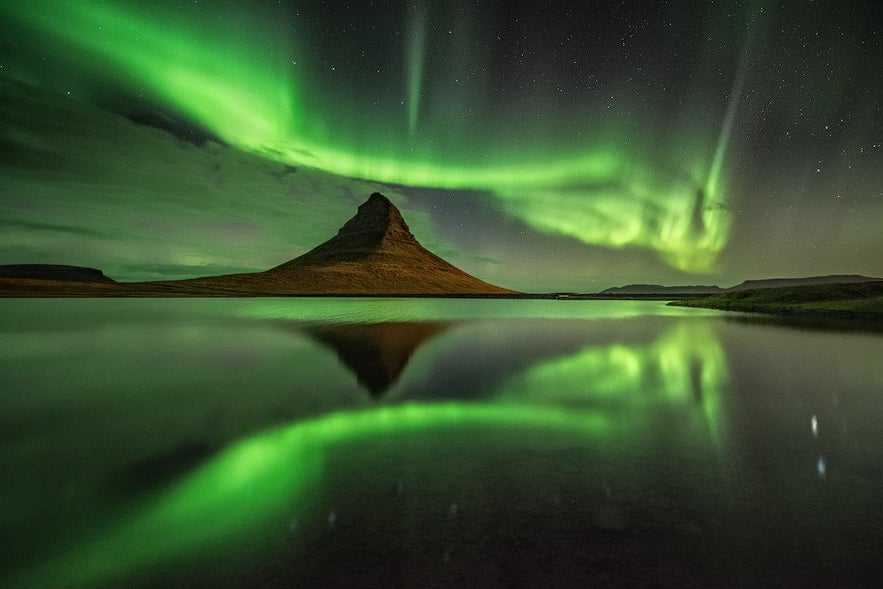 The aurora borealis, also known as the northern lights, is the most famous type of aurora. This captivating light display occurs in the Earth’s polar regions, primarily around the Arctic Circle. It is caused by the interaction between charged particles from the sun, known as solar wind, and the Earth’s magnetic field. As these particles collide with gases in the atmosphere, they release energy that manifests as shimmering colors in the sky.
The aurora borealis, also known as the northern lights, is the most famous type of aurora. This captivating light display occurs in the Earth’s polar regions, primarily around the Arctic Circle. It is caused by the interaction between charged particles from the sun, known as solar wind, and the Earth’s magnetic field. As these particles collide with gases in the atmosphere, they release energy that manifests as shimmering colors in the sky.
The hues of the aurora borealis can range from soft greens to intense pinks and purples, creating a mesmerizing display that moves and changes shape as if dancing across the night sky. These rare aurora borealis colors are especially striking during a strong aurora event.
This phenomenon is best viewed in high-latitude areas such as Iceland, Norway, and Canada during the winter months when dark skies allow the colors to shine brightest. To get a sense of what the experience looks like, take a look at the 22 photos of the aurora borealis in Iceland.
Aurora Australis
 The aurora australis, or southern lights, is the southern hemisphere’s counterpart to the aurora borealis. Like its northern sibling, the aurora australis is caused by charged particles from the sun interacting with Earth’s magnetic field and atmospheric gases.
The aurora australis, or southern lights, is the southern hemisphere’s counterpart to the aurora borealis. Like its northern sibling, the aurora australis is caused by charged particles from the sun interacting with Earth’s magnetic field and atmospheric gases.
This phenomenon occurs in polar regions surrounding the South Pole and can be seen in locations such as Antarctica, parts of Australia, New Zealand, and some southern regions of South America.
The colors of the aurora australis are similar to those of the aurora borealis, displaying greens, purples, and occasional reds in vibrant, shifting patterns. However, due to the remote locations from which it can be viewed, the aurora australis is less commonly seen by people, adding an element of rarity to its stunning beauty.
- Learn about The Weather & Temperature in Iceland
Unique Types of Aurora
Beyond the northern and southern lights, other rare auroral types, such as proton arcs, STEVE, and picket fence auroras, offer distinctive displays that reveal fascinating interactions within Earth’s atmosphere and magnetic field.
Each type has unique visual characteristics and underlying causes, providing scientists with valuable insights into solar and geomagnetic processes while offering viewers extraordinary, less commonly seen spectacles in the night sky.
Proton Arc
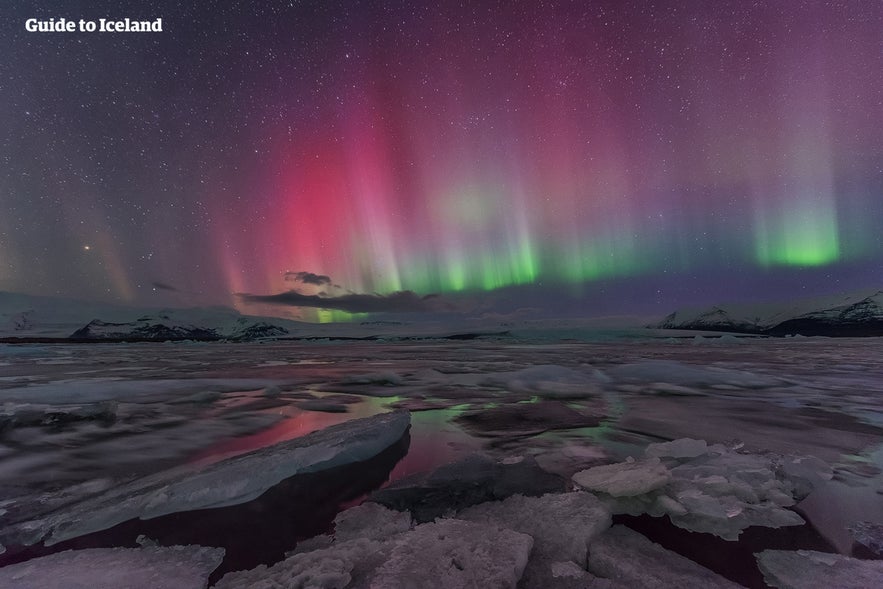 Proton arcs are a rare and distinctive type of aurora caused by high-energy protons from the sun colliding with Earth’s atmosphere. Unlike typical auroras, which are primarily produced by electrons, proton arcs are generated by proton collisions.
Proton arcs are a rare and distinctive type of aurora caused by high-energy protons from the sun colliding with Earth’s atmosphere. Unlike typical auroras, which are primarily produced by electrons, proton arcs are generated by proton collisions.
This interaction results in a bright, narrow arc of light that appears in the night sky, often in hues of red or pink. Proton arcs are most commonly seen in polar regions, and their shape tends to be more stable and defined compared to the typical flowing auroral patterns. Due to their rarity and unique formation, proton arcs are a fascinating subject of study and a rare treat for aurora observers lucky enough to spot them.
STEVE
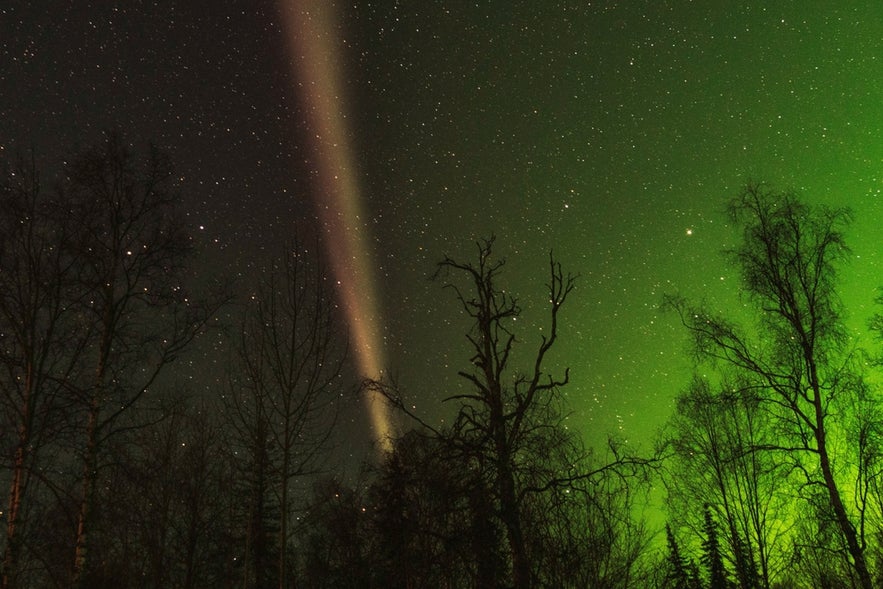 STEVE, or Strong Thermal Emission Velocity Enhancement, is a relatively recent addition to the list of known auroral phenomena. Unlike traditional auroras, STEVE appears as a thin, ribbon-like strip of purple or green light stretching across the sky, often accompanied by a faint “picket fence” structure.
STEVE, or Strong Thermal Emission Velocity Enhancement, is a relatively recent addition to the list of known auroral phenomena. Unlike traditional auroras, STEVE appears as a thin, ribbon-like strip of purple or green light stretching across the sky, often accompanied by a faint “picket fence” structure.
STEVE is believed to be caused by a mechanism different from typical auroras, possibly involving faster-moving charged particles in the upper atmosphere. While its exact cause is still under study, STEVE’s distinct appearance and rare occurrence make it a unique and intriguing phenomenon. Since it was formally identified in 2018, STEVE has captured the attention of scientists and skywatchers alike for its extraordinary visual display and unusual origins.
Picket Fence Aurora
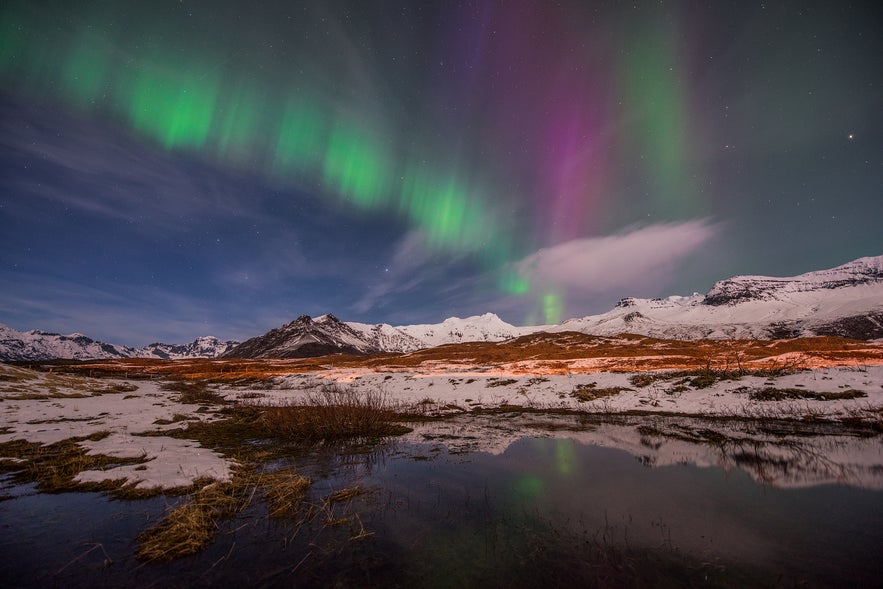 The picket fence aurora is a rare and visually striking auroral display characterized by vertical light pillars that resemble the shape of a picket fence. This phenomenon occurs when charged particles in Earth’s magnetosphere interact with the atmosphere in a specific way, creating vertical beams that extend upward from the horizon.
The picket fence aurora is a rare and visually striking auroral display characterized by vertical light pillars that resemble the shape of a picket fence. This phenomenon occurs when charged particles in Earth’s magnetosphere interact with the atmosphere in a specific way, creating vertical beams that extend upward from the horizon.
Typically seen in the polar regions, picket fence auroras can appear in colors ranging from green to purple and are usually aligned in parallel formations. Their unique structure and vivid appearance make picket fence auroras a breathtaking spectacle for those fortunate enough to witness them, standing out as one of the more distinctive types of auroras in the night sky.
Etymology of Aurora
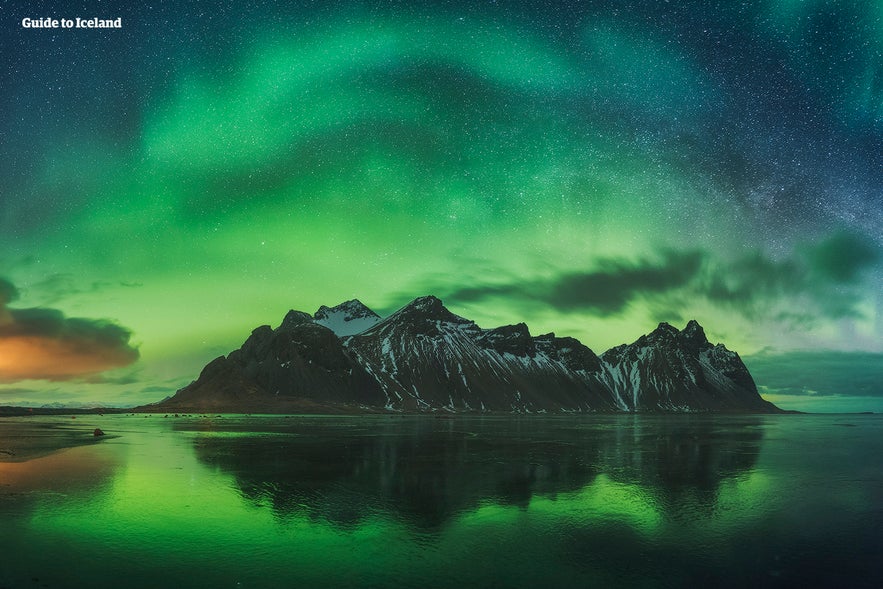 The term "aurora" originates from the Latin word for "dawn," a fitting description given the ethereal glow and soft illumination that auroras bring to the night sky, particularly during the early morning hours. The full term "aurora borealis," used specifically for the northern lights, was coined in the early 17th century by the renowned Italian scientist Galileo Galilei. He combined "aurora," the goddess of dawn in Roman mythology, with "borealis," meaning "northern" in Latin, to describe the phenomenon as a "northern dawn."
The term "aurora" originates from the Latin word for "dawn," a fitting description given the ethereal glow and soft illumination that auroras bring to the night sky, particularly during the early morning hours. The full term "aurora borealis," used specifically for the northern lights, was coined in the early 17th century by the renowned Italian scientist Galileo Galilei. He combined "aurora," the goddess of dawn in Roman mythology, with "borealis," meaning "northern" in Latin, to describe the phenomenon as a "northern dawn."
This poetic name captures the serene, dawn-like quality of the lights, which often fill the sky with colors and shapes reminiscent of a celestial sunrise. These lights illuminate the dark Arctic skies with ribbons and waves of color, captivating viewers throughout history with their enchanting display.
Occurrence of Aurora Borealis
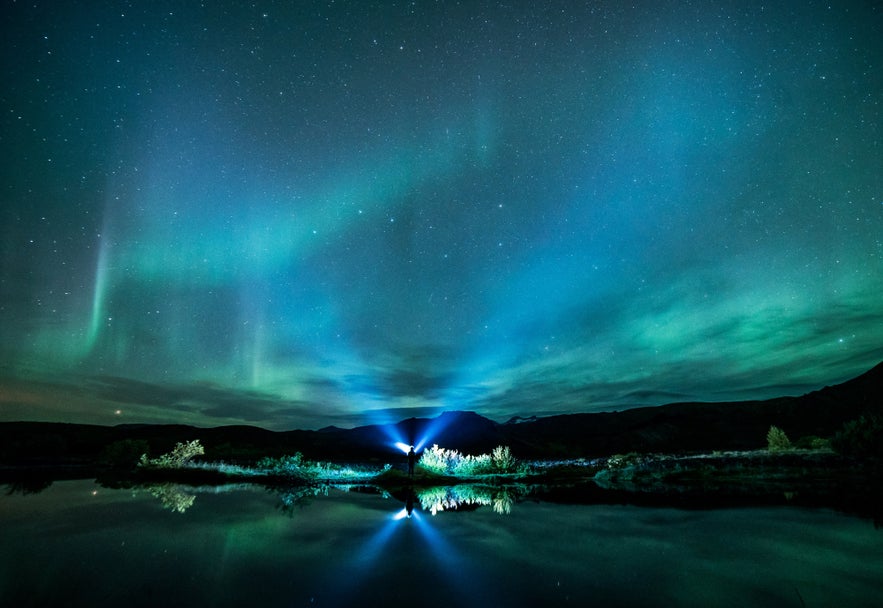 The aurora borealis, commonly known as the northern lights, is a mesmerizing natural light display that primarily occurs in high-latitude regions near the Arctic Circle, including countries like Iceland, Norway, Canada, and Finland. This phenomenon is created when charged particles from the sun, carried by solar winds, collide with gases in the Earth’s magnetosphere.
The aurora borealis, commonly known as the northern lights, is a mesmerizing natural light display that primarily occurs in high-latitude regions near the Arctic Circle, including countries like Iceland, Norway, Canada, and Finland. This phenomenon is created when charged particles from the sun, carried by solar winds, collide with gases in the Earth’s magnetosphere.
As these particles interact with oxygen and nitrogen atoms in the upper atmosphere, they release energy in the form of colorful lights that dance across the night sky. The colors, ranging from green and pink to purple and blue, vary based on the altitude and type of gas involved, creating a breathtaking spectacle that has captivated observers for centuries.
- Learn more about Northern Lights in Iceland - When & Where To See the Aurora
Causes of the Aurora
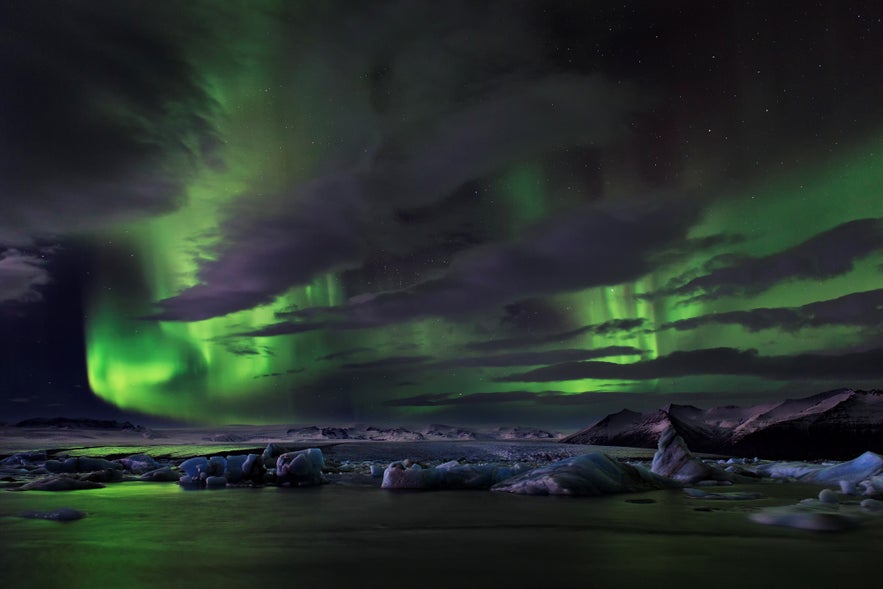 1. Solar Wind: The primary cause of the northern lights is the solar wind, which consists of charged particles emitted by the sun. These particles are carried towards the Earth by the solar wind and interact with the Earth's magnetic field.
1. Solar Wind: The primary cause of the northern lights is the solar wind, which consists of charged particles emitted by the sun. These particles are carried towards the Earth by the solar wind and interact with the Earth's magnetic field.
2. Earth's Magnetic Field: When the charged particles from the sun reach the Earth's magnetic field, they are directed towards the polar regions where the magnetic field is strongest. This interaction causes the particles to collide with gases in the Earth's atmosphere, resulting in the colorful light display known as the northern lights.
3. Atmospheric Gases: The different colors of the northern lights are produced by the interaction of the charged particles with gases in the Earth's atmosphere. For example, oxygen produces green and red colors, while nitrogen produces blue and purple colors.
Solar Wind Interaction with Earth
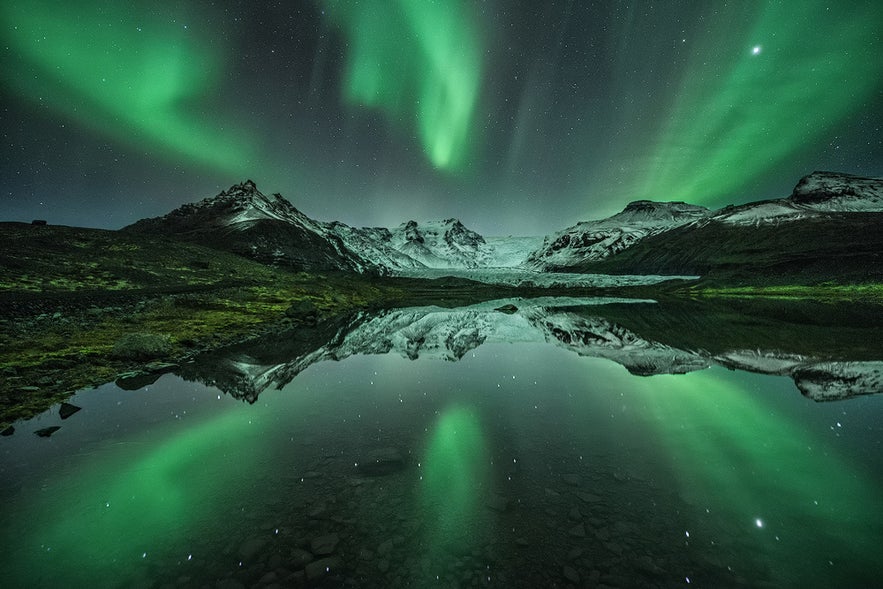 When the sun releases a stream of charged particles, known as the solar wind, these particles travel across space and sometimes make their way toward Earth. Upon reaching our planet, the solar wind collides with Earth’s magnetosphere, a protective magnetic field that shields us from much of the sun’s radiation. However, when the solar wind is strong enough, it can disturb the magnetosphere and create pathways for charged particles to enter.
When the sun releases a stream of charged particles, known as the solar wind, these particles travel across space and sometimes make their way toward Earth. Upon reaching our planet, the solar wind collides with Earth’s magnetosphere, a protective magnetic field that shields us from much of the sun’s radiation. However, when the solar wind is strong enough, it can disturb the magnetosphere and create pathways for charged particles to enter.
As these particles travel along the Earth’s magnetic field lines, they head toward the polar regions, where the magnetic field is strongest. Once in the upper atmosphere, the particles interact with gases like oxygen and nitrogen.
These interactions excite the gases, causing them to emit light in various colors, typically green, but sometimes pink, red, or purple, depending on the altitude and type of gas involved. This beautiful display is what we recognize as the northern lights, or aurora borealis, a breathtaking result of solar activity meeting Earth's atmosphere.
- Learn how to Photograph the Northern Lights
Auroral Particle Acceleration Phenomenon
 In the study of the different types of auroras, one key phenomenon to explore is auroral particle acceleration. This process involves charged particles being accelerated by electric fields in Earth's magnetosphere, ultimately leading to the creation of the mesmerizing light displays known as the aurora borealis.
In the study of the different types of auroras, one key phenomenon to explore is auroral particle acceleration. This process involves charged particles being accelerated by electric fields in Earth's magnetosphere, ultimately leading to the creation of the mesmerizing light displays known as the aurora borealis.
These particles, often originating from the solar wind or magnetospheric processes, interact with Earth's magnetic field and atmosphere to produce the stunning colors and shapes that we observe in the night sky.
Significant Historical Events Related to Aurora
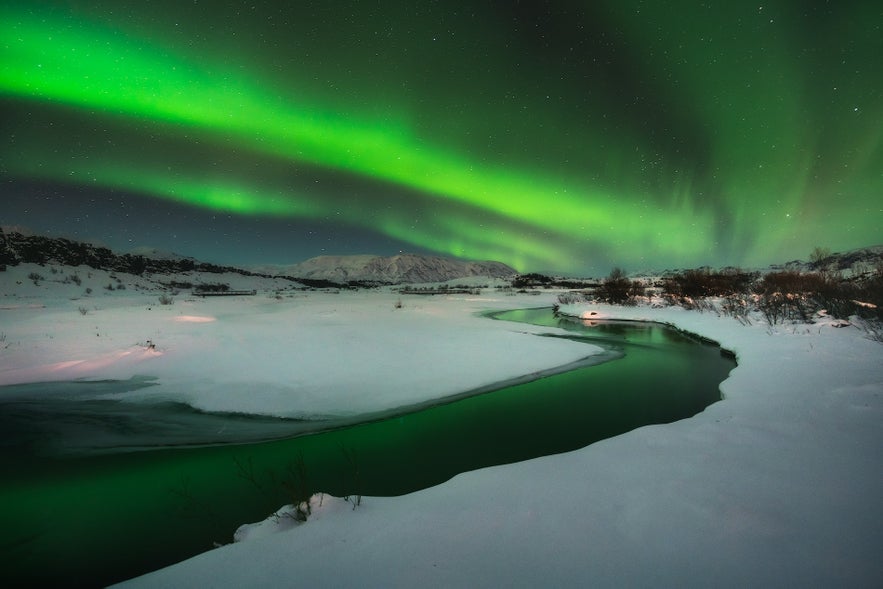 Throughout history, solar activity has produced extraordinary auroral displays and powerful geomagnetic storms, some with far-reaching impacts on society and technology. These significant events offer a glimpse into the remarkable effects that solar flares and geomagnetic disturbances can have on Earth, from creating vibrant auroras in unexpected regions to disrupting essential infrastructure. Here are some of the most notable auroral and solar events recorded over the centuries:
Throughout history, solar activity has produced extraordinary auroral displays and powerful geomagnetic storms, some with far-reaching impacts on society and technology. These significant events offer a glimpse into the remarkable effects that solar flares and geomagnetic disturbances can have on Earth, from creating vibrant auroras in unexpected regions to disrupting essential infrastructure. Here are some of the most notable auroral and solar events recorded over the centuries:
The Carrington Event (1859)
The Carrington Event is one of the most famous historical events related to the aurora. In 1859, a massive solar flare caused a geomagnetic storm that resulted in vibrant auroras being visible as far south as the Caribbean. Telegraph systems across Europe and North America failed, and the event is considered one of the largest geomagnetic storms in recorded history.
The Maunder Minimum (1645-1715)
The Maunder Minimum was a period of decreased solar activity that coincided with a time of very low sunspot activity. This period is also known as the "Little Ice Age" and is associated with a decrease in auroral activity. The lack of sunspots during this time is believed to have contributed to colder temperatures in Europe and North America.
The Solar Storm (1989)
In March 1989, a massive solar storm caused a geomagnetic disturbance that led to a widespread power outage in Quebec, Canada. The auroras that resulted from this storm were visible as far south as Texas. This event highlighted the potential impact of solar storms on modern technology and infrastructure.
Historical Perspectives and Folklore About the Aurora Borealis
 The aurora borealis has captured people's imagination for centuries. Various cultures believed that the dancing lights in the sky were a sign from the gods or spirits. The Inuit people of the Arctic region believed that the northern lights were the spirits of their ancestors playing games in the sky.
The aurora borealis has captured people's imagination for centuries. Various cultures believed that the dancing lights in the sky were a sign from the gods or spirits. The Inuit people of the Arctic region believed that the northern lights were the spirits of their ancestors playing games in the sky.
Throughout history, the aurora borealis has been the subject of many myths and legends. In Norse mythology, the lights were thought to be reflections from the shields of the Valkyries as they rode their horses across the sky. In Finnish folklore, the northern lights were believed to be caused by a firefox running across the snow, creating sparks in its wake.
Explorers and travelers in the past were often awed by the sight of the aurora borealis, with reports of shimmering curtains of light dancing across the night sky. Scientists have since demystified the phenomenon, explaining that the northern lights are caused by solar particles colliding with the Earth's atmosphere, creating stunning displays of light and color.
- Read more about the Northern Lights in Iceland - Science & Mythology
- See also: Folklore in Iceland
Extraterrestrial Aurora
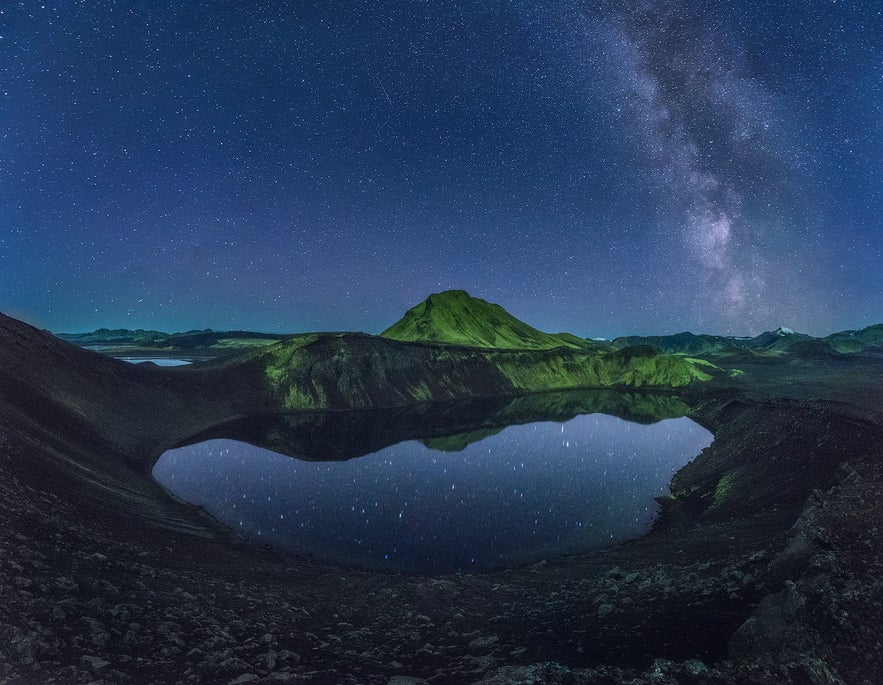 Extraterrestrial aurorae are natural light displays that occur on other planets in our solar system. While Earth is known for its spectacular northern and southern lights, or aurora borealis and aurora australis, other planets also experience similar phenomena.
Extraterrestrial aurorae are natural light displays that occur on other planets in our solar system. While Earth is known for its spectacular northern and southern lights, or aurora borealis and aurora australis, other planets also experience similar phenomena.
For example, Jupiter's aurorae are caused by its strong magnetic field interacting with charged particles from the sun, creating stunning displays of colorful light in the planet's atmosphere. Saturn's aurorae are also a sight to behold, with intricate patterns and shapes dancing across the planet's skies.
When & Where To Catch the Aurora in Iceland
The best time to see the northern lights in Iceland is from late September to early April, when nights are long and skies are dark enough for optimal viewing. The peak hours for aurora activity usually fall between 9 PM and 2 AM, though sightings can occur anytime during the dark hours. For the best experience, plan around the new moon for darker skies and keep an eye on aurora forecasts, since solar activity plays a big role in visibility.
Right now, conditions are especially good. Scientists confirm that the sun is at the peak of its 11-year cycle, known as the solar maximum. According to NOAA and NASA, this peak happened around mid-2025. Recent studies also note that Solar Cycle 25 has outperformed early forecasts, with more sunspots and energy fueling the aurora than predicted.
In simple terms, this means northern lights are brighter, more frequent, and more widespread than usual. If you’re planning a trip to Iceland in 2025 or 2026, you’re catching the aurora at one of the best times in recent years.
How To Catch the Northern Lights in Iceland
Seeing the northern lights often comes down to being in the right place at the right time. If you’re wondering how to find the northern lights in Iceland, the essentials are clear skies, low light pollution, and an understanding of aurora forecasts.
Most people are familiar with the Kp index, a global scale from 0 to 9 that measures geomagnetic activity. A Kp of 2–3 usually brings auroras to Iceland, while higher values can push them farther south.
The Kp index, however, doesn’t tell the whole story. For a clearer idea of aurora activity, it also helps to check the Bz component of the solar wind (a southward Bz strengthens auroras), OVATION models that show real-time maps, and detailed cloud cover forecasts, since clear skies are essential.
Modern apps now combine these data points into easy alerts that are simple to follow. Here are some of the best northern lights tracking apps and websites you can use:
-
Hello Aurora – Iceland-based app with live aurora sightings, cloud forecasts, and community reports.
-
Aurora Alerts – uses a simple traffic-light system to show visibility chances.
-
My Aurora Forecast & Alerts – sends notifications when activity is high.
-
NOAA Space Weather Prediction Center – provides global aurora forecasts based on real-time solar wind and geomagnetic data.
-
Vedur.is – Iceland’s official weather site, with detailed aurora and cloud cover forecasts.
By combining solar activity updates with cloud forecasts and staying flexible about where you go, you’ll greatly improve your chances of catching a spectacular display.
Where To See the Northern Lights in Iceland
 Iceland offers many excellent locations for aurora viewing, with the best spots located far from artificial light. Here are some top destinations:
Iceland offers many excellent locations for aurora viewing, with the best spots located far from artificial light. Here are some top destinations:
-
Thingvellir National Park: Just outside Reykjavik, this UNESCO site has wide, open skies and minimal light pollution, making it a favorite for both locals and tourists.
-
Reykjanes Peninsula: Near Keflavik Airport, this peninsula offers rugged coastlines and geothermal areas with dark, unobstructed skies.
-
Vik and the South Coast: Known for its dramatic landscapes and black sand beaches, Vik and nearby spots such as Dyrholaey and Jokulsarlon provide scenic and dark viewing conditions.
-
Akureyri & Lake Myvatn (North Iceland): In the north, areas like Akureyri and Lake Myvatn have extended winter nights and generally darker skies, enhancing visibility.
-
Westfjords: The remote Westfjords region has some of the darkest skies in Iceland, making it one of the best places for aurora viewing.
-
Snaefellsnes Peninsula: With diverse landscapes and iconic sites like Kirkjufell, this peninsula is perfect for catching auroras with scenic backdrops.
Head to these areas on clear nights, away from city lights, and stay updated on aurora activity to maximize your chances of seeing this incredible natural phenomenon.
For those who want the experience right outside their doorstep, the best northern lights hotels in Iceland are located in remote areas with minimal light pollution, giving you a front-row seat to the aurora when conditions are right.
- Learn more about The Best Time to See the Northern Lights in Iceland
- Find out the Best Places to See the Northern Lights in Reykjavik
FAQ's About the Northern Lights and Different Types of Auroras
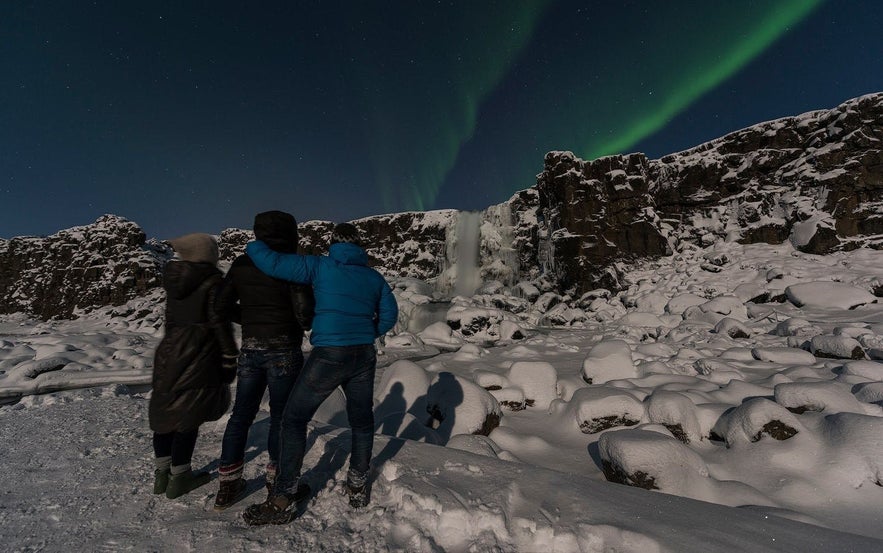 Here are some frequently asked questions about the northern and southern lights.
Here are some frequently asked questions about the northern and southern lights.
Why does the aurora have different colors?
The color of the aurora is determined by the type of gas in the atmosphere and the altitude at which the interactions occur. Green and red auroras are produced by oxygen, with green occurring at lower altitudes and red appearing at higher altitudes. Blue and purple colors, on the other hand, are caused by nitrogen in the lower atmosphere. Each gas and altitude combination creates a unique hue, adding to the captivating range of colors seen in auroral displays.
What is the best time to see the northern lights in Iceland?
The best time to see the northern lights in Iceland is from late September to early April, when long, dark nights offer optimal conditions. Peak viewing hours are typically between 9 PM and 2 AM.
Where are the best places to see the northern lights in Iceland?
Top spots in Iceland for northern lights viewing include Thingvellir National Park, close to Reykjavik with open skies; Reykjanes Peninsula, near Keflavik Airport with rugged coastlines; and Vik along the South Coast, offering dark, scenic skies.
In North Iceland, Akureyri and Lake Myvatn have extended winter nights, while the Westfjords provide some of the darkest skies. The Snaefellsnes Peninsula, with its iconic Kirkjufell Mountain, also offers a stunning backdrop for aurora watching.
Can I see auroras outside of polar regions?
Yes, intense geomagnetic storms can push auroras to lower latitudes, but this is rare. Typically, the northern lights are visible in high-latitude regions near the Arctic Circle.
What is the history behind the term "aurora"?
The word "aurora" comes from the Latin for "dawn." Galileo Galilei coined "aurora borealis" in the 17th century, combining "aurora" (dawn) with "borealis" (northern) to describe the phenomenon as a "northern dawn."
Are there northern lights on other planets?
Yes! Other planets, like Jupiter and Saturn, have auroras due to their magnetic fields and interactions with charged solar particles.
Can I drive myself to see the northern lights in Iceland?
Yes, many visitors rent cars to explore prime viewing locations independently. Just be cautious of the weather and road conditions, especially in winter.
Have you ever seen the northern or southern lights? If you had the chance, would you travel north to see the aurora borealis or venture south to see the aurora australis? Which one fascinates you more? Let us know in the comments below!


